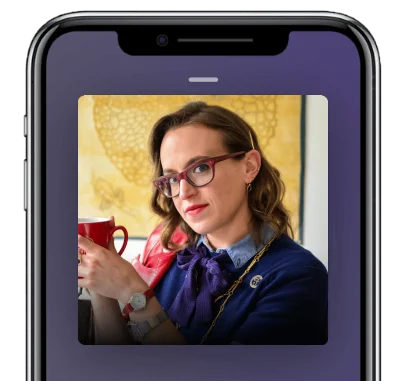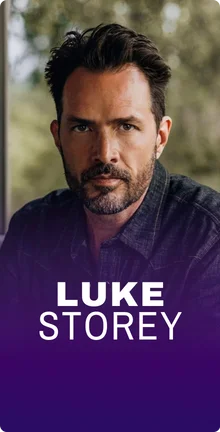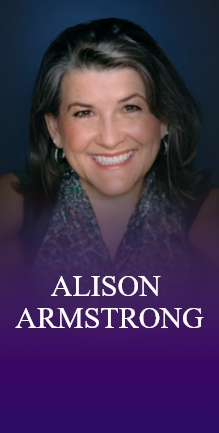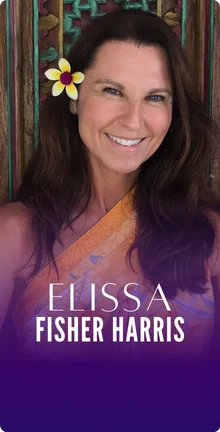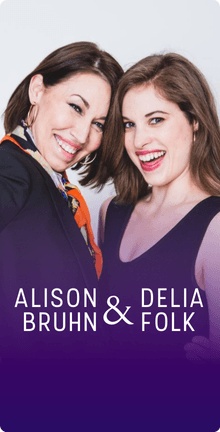Thank you so much for having me.
Let’s talk about style and fashion. Why should people even care about style if they want to be a better person or take their life to the next level? Where do fashion and style fit in? Is it superficial? Is there something more powerful about it that we should know about?
This is one of my favorite topics to talk about, so I’m thrilled to answer that question. I think that style and fashion get a bad rep for being something that’s superficial because it’s something that you put on your body. It’s not a deep thing, but I completely disagree with that. The choice that we make every day in what we put on our bodies is quite profound. Anyone will tell you that how they feel wearing a nice pair of slacks versus sweatpants have a big impact on your mood. I’m interested not much in buying new things or following trends as they go through the seasons, but taking a deep dive into what that inner voice wants to wear and honoring that in order to present the most authentic version of yourself to the outside world.
Style and fashion are way beyond just clothes. They are a tangible way for us to communicate something with the world and in a powerful way. Whether or not you’re interested in style or fashion, I don’t think that matters. What matters is that you have to acknowledge the point that people are going to judge you no matter what you’re wearing. We all as humans, that is our methodology of moving through the world, is making snap judgments about people. Whether or not you want to play into that game is fine. Defining yourself from the inside out can have a powerful impact on how you see yourself and how the rest of the world sees you.
It’s basically putting yourself back in the driver’s seat because you do acknowledge that people are going to judge regardless. Why not wear something that helps you to feel empowered, powerful, capable, and whatever other feelings you want to have and be in the driver’s seat?
Being in the driver’s seat is a great way of putting it. You have to put on clothes anyway. Why not have some agency in that? It’s fun or it’s not, but I find that it can be such a joyful process of my day. Getting dressed is a big aspect of my self-care. It’s something that I make a priority for myself. It gives me almost as much satisfaction, if not more, to help that with other people. To see how other people can respond in such a positive way when they’re wearing something that makes them feel confident, it’s like having a superpower, honestly. I love sharing that with other people.
I’m all about being intentional. If I’m more intentional about what I wear, that’s one way that I manifest my intentionality. I do my best to be as intentional as possible about what I put into my body, what food I eat and the supplements I take. I want to be intentional about what clothes I wear too so that I’m showing up in the world in the way that I want to show up. One thing that intrigued me and I wanted to delve deeper into is this concept of confidence. If I can show up more confident, will I also then be more confident? Was it Amy Cuddy who had this power poses TED Talk where she talked about the Wonder Woman stance?
Yes. When I was in middle school, I was going through a regular teenage angst period. My mother said something to me that I have never forgotten, which is your reality is what you make of it. If you want to be sad, your reality will be sad. If you want to be confident, your reality will include confidence. I can’t overstate the importance of these tangible acts in our life having intangible effects. We all serve to try and get better at all things, be better people and treat others with respect. Whatever your goals are, they are constantly moving and changing. Sometimes it can be difficult to enact change when it’s something in your brain or in your thoughts that takes so much work.
I love this idea of almost tricking yourself. It’s not the best word choice. It’s how the physicality of putting on a nice outfit, cleaning up your desk before you go to work, or these things that you can do with your hands and see with your eyes, feel and touch. I love that they’re almost a shortcut for this intentionality. We all have our own efforts. I meditate every morning and I do think about having a mindfulness practice in my life. There’s something very easy-going, uplifting, and relaxing to me when it’s something like putting on my clothes. It seems more approachable to me because I have to do it anyway. Whereas doing something that has more of an intangible effect can be a little intimidating for some. The sooner we reclaim that power of what style and fashion can be, the sooner then we can also step forth into those other goals that we may have as human beings.
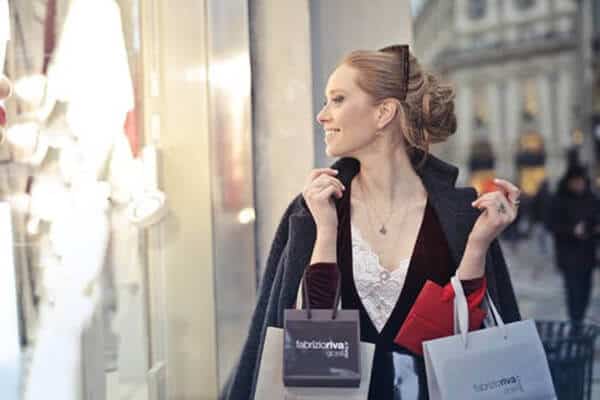
Are there particular clothing items, accessories or something that would help us tap into our confidence? I’m thinking specifically of another guest on my show, Todd Herman, who had this whole story about him using eyeglasses as a prop. That’s the wrong word, but it’s an anchor for him. When he wears them, even though he’s got perfect eyesight, he doesn’t need glasses. When he puts them on, it accesses his alter ego. Then the alter ego, he’s got this superpower of this powerful stage presence, and all these skills and abilities are heightened. That gets him into that zone and into a flow state.
That’s the perfect example of what I’m talking about. It’s been an interesting process. While I was researching my third book, 50 Ways to Wear Accessories, I’ve found that accessories are the most profound things we humans wear. We’ve been wearing accessories as long as we have been humans. They have found jewelry and all different types of articles of adornment from really early discoveries of human remains. They are this universal thread that connects us to our past, our present and our future. I found that they have almost this talismanic, amuletic, special and profound purpose that I find differs a little bit from clothes. That eyeglass example is such a perfect example. My father’s mother, my Grandmother Enid, she was a huge style influence for me mostly after her passing.
I’m the only granddaughter. I inherited most of her stuff. She was a huge clothes horse. The act of wearing her things has become a guiding light through my life. I wear something of hers almost every single day. Just putting some of that quick magic around accessories, like the person that you become when you wear eyeglasses, for me, it’s putting on something of my grandmother’s. There is something quite profound, special and magical about putting on any accessory that transports you into a different realm or place. The stuff from my grandmother is a big one. I’m never without my Timex watch. It’s a men’s watch. It’s waterproof and it has a light. It has a timer, which I find myself using all the time. Though the watch will never leave my side, the accessories, I get a lot of joy from the variety in my life. I like choosing a different accessory for every day. Getting dressed in this way is a story for me. I am also a writer. I love fiction. I’ve always been a storyteller. Waking up and saying, “Today I’m wearing a summer camp counselor, cutoff jeans and a baseball shirt.” I put on a pair of earrings that would look like you made them in the arts and crafts cabin. Or that I am taking a trip to Paris after working in Egypt all summer. These are fun ways of tapping into what my creative self likes to do, which tell these stories through getting dressed. Accessories, they are the exclamation point of that story. They are what make the story what it is.
How do you know which accessories to wear if you’re not a stylist and you’re not a fashionista-type of person? I don’t think of myself as being terribly fashionable, but my wife is very good at it, so I end up looking good when I go out. If I didn’t have her around, let’s say I was on a trip somewhere or it was just me on a business trip, I would want her to help me pick out my clothes, accessories and everything when I was packing to leave. I made sure I knew what to wear, especially if I’m going to be on stage speaking. I don’t normally wear suits anymore, but I used to. I’m thinking of one particular accessory that I never figured out, and that was a pocket square. I’ve never used it. I don’t know why people use it, when or what the rules are around it. I put that in the too hard basket. My wife doesn’t have experience with pocket squares, so it’s in the too hard basket. Can you demystify this for me and for our readers?
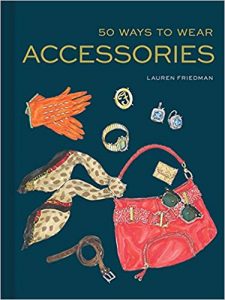
Here’s my shameless plug for 50 Ways to Wear Accessories. My hope is that by picking it up, there will be an expert who lives in your closet. Stephan, I’m looking at your homepage. The photo that you have of yourself for Get Yourself Optimized, you’re wearing a suit jacket and a white-collared shirt which is open. I love a pocket square, specifically in this outfit. When you don’t have a tie on, this pocket square, like any other accessory, adds what I call the dig. The dig is a term that a friend and I had described as that one element that takes your outfit to the next level. It takes it to the top notch. I have a crazy pair of shoes and I’m wearing it with a black dress, that’s the dig. I have a fabulous purse with a scarf tied on it, and that is the dig of the outfit.
For pockets square specifically, it’s mathematics. You have two extreme positives here with a suit and a white button-up shirt, which are reserved, professional and buttoned up. By adding in a pocket square, which I would say is the dig in this outfit, it’s the negative to those positives. It adds something that says, “I’m here. I thought about my outfit. I am approachable because I’m adding a little bit of something to set me apart without being overpowering.” It sounds like since a pocket square is already in the difficult category for you, it might feel too much if you had a tie on with a pocket square.
If you’re doing this open-collared shirt with a blazer, a pocket square is a nice way of introducing another layer of texture and color. It’s not difficult to use them. You can gently fold it and place it in there and a little bit peeks out. It adds a nice element that says, “I put a little bit of thought into this,” which shows a level of respect to the people that you’re working with that you honor and value their presence by putting in those thoughtful touches.
It shows attention to detail like, “If he’s that attentive to detail with his outfit, maybe he’ll be that attentive working with me when he’s coaching me, when he’s consulting, meeting my internet marketing, my SEO or whatever.”
The first step is showing respect for yourself. It also shows respect for other people, especially in a professional context. You don’t want to let your style overwhelm your message, your brand or your vision. Those small touches can show that attention to detail which can be appealing for someone if you’re in a position of looking for consulting work or being hired. It’s a fun way of adding something individualistic to what could be a generic blazer and shirt.
How would you pick the pattern or the color? Is there some science to that or some set of rules?
I’m looking at this picture on your homepage. I see that you have blue eyes. When you are having a professional photograph taken or you’re appearing on camera, an easy trick to uplift your look is to match to your eyes. For you, I would think a pocket square that has some light blue detail in it is going to make everything pop. It’s almost continuously in more ways to serve this thoughtfulness. Not only did you think about putting on a pocket square, but you also took it to the next level where you acknowledged, “This looks good with my eyes.” For women, wearing earrings which match your eye color if you’re having a professional photo taken, or wearing a shirt or a dress that complements your eye color, it adds such a nice polish. It makes your eyes sparkle, which makes everyone more appealing. That’s a great place to start.
Colors all have a message, in the same way that accessories have a message. It’s a unique and illuminating practice to start to pay attention to how colors make you feel and how you would like other people to feel with those colors. If you’re going on a date and you want to display some passion, red is such a nice place to go. If you want to convey a message of friendliness and congeniality, something with yellow, something bright and joyful, orange. The list can go on and on. These color symbols and these symbols that we incorporate in our lives are subconscious for much of us. There’s a big opportunity, especially in a business setting, to pay attention to them and take advantage of them.
The right choices are there for you. Share on XOne of my tips in 50 Ways to Wear Accessories is geared towards women, but this could definitely relate to men. If you are wearing a brooch, think about whether you’re wearing it to cover up your heart or to leave your heart open. Maybe you are in a context where you’re giving a big presentation and you want to feel as if you have your armor on. You might put up something that covers up your heart. Whereas if you are in a speaking engagement or meeting with someone where you want to be vulnerable and open yourself up, then you think about leaving your heart open. It’s a pleasure for me to think about these, I guess you could call them spiritual, you could call them intentional, whatever your method of accessing a higher power is. These are things that you put on your body that can be tools for accessing that.
When you were talking about being open, vulnerable and having your heart open, it reminded me of something that I learned from Neil Strauss. He wrote the book The Game and The Truth. I learned from Neil that scarves are something that women wear to protect themselves so that they’re not vulnerable. When you’re speaking to a woman who is wearing a scarf, it’s like she’s got a shield up. I once had a girlfriend who wore scarves a lot. It became apparent that she was guarded, protecting herself all the time. That is an example of an accessory that was used in a defensive measure.
In this day and age, and as from my perspective as a woman, in light of the #MeToo Movement, it’s been an interesting thought process of starting to tease out which messages I have internalized that are external messages and which messages are things that are coming truly from me. When I was living in DC, I lived on a busy street. Without even thinking about it, I would get dressed based on how much attention I would get walking down that street. It would be often a defensive thing. I needed to make sure to have a jacket on, a scarf, or a bag that covered up my body. It’s a different side of the same coin that I’m talking about the intentionality and the access to a higher power that you can use through accessories. By that same token, you can also guard yourself against the world with them.
I don’t think it’s a negative thing if it’s something that makes people feel safer. For women who choose to wear a hijab or have their head covered, whatever someone’s reason is for these things, it’s important to respect. As I went on this journey of diving into accessories and doing research about them on every facet, it gave me a deeper commitment to my accessories and also a greater respect for why other people chose theirs. My hope too is that through this work that I’m doing with styling, writing, and illustrating, people not only will have greater respect and commitment to their own accessories, but they’ll also respect that there are differences amongst all of us. Ultimately, we’re all the same inside. We all may have different reasons for reaching for different things. Ultimately, inside we are all just human beings in that respect for whatever someone is bringing to the table on that day. It can be informed by someone who is aware of the different ways that people can be living and struggling in the world at that time.

Another way that people sometimes will wear accessories or certain items of clothing is to peacock. That’s another term and idea that I learned from Neil Strauss. It’s a way to stand out, get noticed and allow people of the opposite sex or whatever you’re trying to attract, to notice you. They have something to comment about if they decided to come up and chat with you. That might be a furry hat, a feather in your cap or something. They’re like, “That’s interesting,” and then they would talk about it.
The New York Times, and it’s in the Thursday Style section, they have been putting up an old article from the past, reviewing it and talking about how things have changed. One of the more recent ones was this 2004 article about male pickup artists. I believe it’s called The Game. The man featured in this article was wearing this big furry hat. Apparently, it was effective in 2004. To wear something that catches someone’s eye, to attract attention, it’s definitely a method that can work for a lot of people. I was single for a long time. I spent lots of time dating and lots of time meeting new people. It was an important thing for me to learn a lot about myself. I found that as that process went on, I began to dress less and less peacocky.
I found that I wanted almost a uniform in those situations so that it was a controlled measure. The date was going to be different, but I could be the same. I knew that I could control. That meant for me wearing mostly black and white, choosing the same dress or the same shirt. Making that conscious choice in order to determine whether my date at that time was interested in me as a human being, or interested in my superficial characteristics. There’s a fine line between that. That was an interesting experience for my life at the time. Now that we are reflecting on some of the aftermaths of the #MeToo Movement and thinking about peacocking or attracting attention in a way that sometimes can feel insincere. Accessories can be something that is a method through which we can understand each other a little bit more.
One thing that came to my mind when you were talking about your experience dating and that you wanted to be more in control of what you could control, every date, every potential suitor you didn’t know what you were going to get. It’s risky. You put yourself out there and the person might be a serial killer. It reminded me of an interview I did with Alison Armstrong. We talked about how dating, if it’s done well, is a fast-sorting process, especially for the woman. She wants to move on as quickly as possible to the next person if it’s not a fit. Don’t drag it out. Get through these people as quickly as possible until you find the right person. Are you familiar with Alison Armstrong?
I have heard of her but I’m not too familiar with her work.
Where you are in that moment is where you're supposed to be. Share on XShe’s fantastic. I’m a huge fan. Tony Robbins teaches some of her stuff too. That’s how I first found out about her. The fast-sorting process is important if you’re out on the dating scene.
As a woman too, there were certain accessorizing elements which made my fast-sorting process as a hetero-woman. The number one for me is I could not stand when a man wore flip-flops on a date. I’m not one to follow too many rules or say a sweeping thing that no one should do. It was an immediate turn off for me and I know it is an immediate turnoff for most women that I know. Whether or not you heard it here first, men, please do not wear flip-flops.
Is it because it’s disrespectful?
I did find it to feel disrespectful. It showed to me that this person didn’t bring the same amount of effort that I had. That there was a lack of acknowledgment of the significance of the moment, which is like, “Here we are making a first impression toward each other, and I’m looking at your dirty toes. I don’t think this is going to work for me.” I do think that there was a method of disrespect. It made me think maybe their life isn’t together in other ways because they were wearing flip-flops. Whether or not that is fair to assume about someone when it comes to dating, you can make your own assumptions based on whatever you feel. That was how I interpreted those flip-flops.
They say how you do one thing is how you do everything. If you show lack of care and attention in preparing for a date, that’s going to show up in your work, it’s going to show up in your family relationships, it will show up everywhere.
Taking that time in the morning to put care into your outfit is something that is a trickledown effect for the rest of my day. It goes both ways with that.
I read that Mark Zuckerberg has a whole wardrobe of the same T-shirt and the same pants. He wears the same exact outfit every single day. That is bizarre to me. Logically, I can understand that he doesn’t want to waste his precious cognitive resources on figuring out what outfit to wear. Decision fatigue is a real thing. Every decision you make, you have less resource left to make further decisions so don’t waste any of your precious finite resource for the day on decisions that don’t matter. I guess for him, what he wears doesn’t matter to him. I would love to hear your take on this.
I have traveled quite a bit. I know for myself for a fact that I could not be that person. When I wear the same thing every day, by the end of even a week or two weeks, I don’t ever want to look at what I’m looking at ever again. I do think that there is a way to incorporate a certain element of this in a powerful way, which is not necessarily you have a uniform. You’re not wearing the same shirt every day. I know this is something that a lot of people do. I definitely have a formula. Even though I might switch things up in that formula, my formula is pretty unchanging. It usually is straight leg jeans and an oversized button-down shirt or a tee shirt with a high-waisted skirt. I might have every color of the rainbow of button-up shirt and every color of the rainbow of my favorite pair of jeans. It’s not the same thing every day, even though it almost is the same thing every day. I’ve found what works for me. It’s this base which I can build upon. If I were Mark Zuckerberg, I probably would add a few different colors to my wardrobe. Decision fatigue is a real thing, and particularly as a woman when we get dressed, there are many options afforded to us.
I have always envied many male wardrobes because it’s straightforward. It’s easy to get a pair of jeans and a pair of shoes. You don’t have to think too much about getting dressed because everything works for you. That’s a challenge that some women have is that there are many options available to us. It’s hard to weed through what matters to us. The first step towards eliminating decision fatigue in your wardrobe is to, whether it’s to do it yourself, to enlist a trusted friend or to hire a stylist. Styling is something that I do as well of the many hats that I wear. To find someone who can help you identify what makes you feel powerful, comfortable and you’re not tugging at your clothes all the time. Once you know that, it becomes easier to shop. You know that you’re going to keep your eye out for every A-line skirt or that you love crew neck shirts. It becomes a puzzle game of, “I know that I have this dress and I need one jacket that’s going to go over it, that can go with twelve different things.” It becomes easier to shop this way because you can identify the holes in your closet and find the things that play well with what you already own. Rather than feeling you have to start from square one every single morning.
We could all be much better off if we found a way to detach ourselves and unyoke from this comparative success and drama. Share on XWhile Mark Zuckerberg’s example is super extreme, I do think that there’s something to learn there, which is that finding what makes you feel confident, that’s intangible. That can’t ever be overstated that importance. By having a closet that you can look at and see everything easily, that’s such a big thing as well. Getting matching hangers, organizing things by type and then color, it takes some time and effort to do that. You’ll never have to do it again because once you see everything that’s there, it becomes such a joy to get dressed in the morning. You have this new ownership over your closet in what you wear because you know where everything is. That is something I would recommend to every single one is making a point to have your closet be as tight and well-thought-out as possible. Eliminate any of that difficulty about what you wear when you get dressed in the morning.
That would look like what? In terms of the layout of the closet, you’d put all of the different shades together, different jeans and stuff, or go, “These are my blue jeans. These are my white jeans. These are my dark jeans.” How does this work?
I am a big fan of Marie Kondo’s The Life-Changing Magic of Tidying Up. I don’t think that it’s for everyone. Some elements of it are extreme. I do think there are some important messages in there. The first one is that in order to reach this closet goal for you, the first thing that you have to do is take literally everything out of your closet. You have to hold every single thing. You have to touch it and ask yourself if it sparks joy. Some things you might keep because you love them, but you never wear them. That’s okay. You’ve got to take everything out. You need to buy matching hangers because I find that having hangers that aren’t the same color adds too much visual confusion. I do like huggable hangers for this reason. They’re the thin, lightweight ones that have a velvety cover, so they’re nice on your clothes.
When it’s time to put everything back in, first you separate by type. Your short sleeve shirts are separate from your long sleeve shirts. Your jeans are separate from your slacks. Your blazers are separate from your cardigans. Things that are dark and heavy go on the left and move into a light-colored and light in weight to the right. You separate it by type and then you separate it by color. You want everything to face the same way. It’s visually such a treat to be able to open your closet and look at it like this. I also do this in my drawers. While I was writing 50 Ways to Wear Accessories, I used all of my own clothes and accessories in that book. Every single day I would illustrate in the morning, then in the afternoon, I would make the biggest mess trying clothes, putting on outfits, taking pictures of myself, trying on more things, taking more pictures. Every night I had to clean up this mess so that I could do it again the next day. Having an organized closet was paramount to that process. It’s something I’ve never deflected from. It’s something that also has made it a lot easier for me to shop because I have a limited number of hangers and space. If I want to buy something, I have to ask myself, “What am I willing to give up to make space for this? Is what I have going to serve this better?” It’s been an empowering facet of my life. Particularly to a sense of the work that I do, I have to walk the walk and talk the talk. My closet is a source of pride and joy for me.
I can attribute to how powerful this seemingly insignificant strategy is in your life because I brought in a stylist. We did a closet cleanse. We’ve got all new hangers and they were all matching. She helped me organize after we got rid of a whole bunch of stuff. I’m a big fan of Marie Kondo as well and asking that question, “Does it spark joy?” before I decide whether to keep it or to donate it. A lot of stuff went out the door. Some things I thought, “I like this,” and my stylist says, “No, this is not fashionable anymore or this is dated or, this is not a good look.” I took her advice on board. Once in a while, I would override her. For the most part, I trusted her judgment. What we ended up with was a closet that did inspire joy and pride in me. I am not as good at figuring out how the different shades go. If it’s a light gray versus a dark gray, I’m pretty good at being able to figure out where that goes in the closet. She had set it up when we worked together.
I appreciate you saying that you brought in a professional because I do think it’s intimidating to do yourself. Honestly, it’s work that I do and I wish that I could clone myself to do it for myself sometimes. It’s much easier to have someone come in with foreign fresh eyes and see the bigger picture when you yourself are stuck in the middle of it. One thing that Marie Kondo does say is that there will be a few things you regret getting rid of. There are definitely a few things which I feel like I paid my sacrifice to the god of cleaning up in order to have a good closet. I wish I hadn’t gotten rid of it but ultimately, I’d rather have gotten rid of that than have the great closet that I do now.
The more we listen to that intuitive voice, the stronger it is and the easier it is to listen to it. Share on XIt’s such an important thing to do for you and particularly for my clients that I do this for. Part of the most joyful aspect for them as well is that they don’t have to buy something new. They’re shopping in their closet. They’re putting in this investment and this commitment to stuff that they already own, which I think is such a beautiful thing. Many of the clothes and accessories that I use in my books and on my blog, My Closet in Sketches, were things that were passed down to me from my mom, my grandmother, or from clients. That makes them special. It’s not only special but also is a green, friendly practice. The day and age of fast fashion hopefully is something that people are waking up to its detrimental effects. A big part of helping that is by not buying new things. To go through your closet and have a good hold on what you already wear and learning how to shop your own closet, it doesn’t just feel good for your style, it also is a good, green practice.
What worked very well was getting that stylist to help me do the closet cleanse to help me figure out new pairings of different shirts, pants, and vests. I had never worn those combinations before. It never even occurred to me. You get in this rut where you do the same pairings over and over again. That gets boring. You get myopic in that viewpoint and you can’t see that, “This particular shirt could go with three other pairs of pants,” and you never tried them.
Hopefully, you were able to save those ideas. That’s one thing that my clients always liked to have is all those outfit ideas that I’ve created whether they have them in a folder on their phone or they print them out and put it in a binder having them ready to go-to so that you can refer to them is a nice, quick, easy fix. My favorite surprise side effect of writing this 50 Ways to Wear series has been seeing how people interpret my words and my illustrations into their own life. Once I’ve finished a book, it almost isn’t mine anymore. It goes out into the world and it takes on its own life. It is such a joy for me to see how people take those ideas and make them into something unique for themselves.
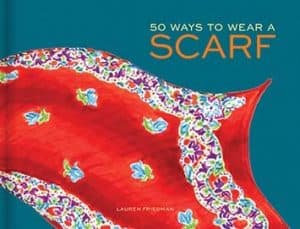
That is a goal of mine through this creation process is that you’ll read it and think, “I have something that looks that. I never thought about pairing them together.” The fact that everything is illustrated by me is also approachable. Sometimes it’s hard to imagine yourself when you’re looking at a picture of someone else. If it’s an illustration and there’s no face attached to it, it’s a drawing. It’s much easier to go into that place and picture yourself in that spot. I’m excited about this book and to see how it is adopted into people’s lives. My book is available from Chronicle Books. You can preorder it wherever books are sold, Amazon, Barnes & Noble. It’s always great to buy from your local bookstore. It does well as a gift. My first book, in particular, 50 Ways to Wear A Scarf, I have been known and have heard of people giving it as a gift and wrapping the book with a scarf. This accessories book I can see being a nice way to tack on a little something extra if you’re buying someone some accessories.
You can go to your local bookstore or on Amazon.com and buy it and get it straight away. How did you end up deciding to do illustrations? That added a significant amount of work to the creation of this book.
I will start by saying that everyone who knew me as a little kid is not surprised by what I’m doing now. Not only was I always changing my outfit three times a day, but I was always drawing. My mom is an architect. She taught me how to do perspective when I was a little kid. I was always taking art classes. I had graduated in the year 2009. I had a normal 9 to 5 job, and then another normal 9 to 5 job. I was tired of coming home from work and looking at another screen after staring at a screen all day. I had majored in political science in college and I played field hockey. I didn’t go on an artistic path. I found that I was missing that creative aspect. This was also around the time that I was starting to inherit some of my Grandmother Enid’s clothes.
When I came home from work, I would make up a crazy outfit. I’d give it a name and a story. I’d illustrate it. It became this blog called My Closet in Sketches. I started it in 2010. Putting something out there on the internet like that quickly afforded me incredible opportunities. I was illustrating for the now-defunct Lucky Magazine every month. I had no idea what I was doing. It was very much a fake it until you make it situation. When I had the opportunity to become a full-time illustrator, a friend of mine encouraged me to write down my one-year, my five-year, and my ten-year goals. Under my one-year goal, I wrote that I wanted to publish a book with Chronicle Books. I had always loved their offerings. I knew that they’d been publishing people who are on the internet.
I wrote down this wish, this goal, and about a year and a half later, Hurricane Sandy was happening on the East Coast. I was tucked in with a blanket at a friend’s apartment watching nature documentaries. I got an email from an editor at Chronicle Books, who had seen a post I had done on My Closet in Sketches website. It was a post about how to wear a scarf. It was drawings and writing. She asked me to write and illustrate 50 Ways to Wear a Scarf. It was completely shocking to me. I couldn’t even believe that this thing I had written down was showing up in my email a year and a half later. It’s very much an example of being careful what you wish for. I didn’t know the first thing about writing a book, but I knew I couldn’t say no. I did the words and illustration for 50 Ways to Wear A Scarf and that came out in 2014.
Listening to what you want to do inside is important. Who knows how that could manifest into something in the future? Share on XHere we are with 50 Ways To Wear Accessories. The illustrations to me are as important as the writing. I couldn’t ever separate either of them in my career. I know that the experience of having an amazing publishing house asking me to write a book is incredibly lucky and amazing. This opportunity, the fact that I still am able to write books is beyond me. It represents many dreams realized. The universe looking out for you when you’re ready to step into that new opportunity. The work of illustrating these books is incredibly time-consuming, but it’s all worth it in the end.
Talk about the power of manifestation, the Law of Attraction.
I have a little bit of an impostor syndrome. Since I am a self-taught illustrator, I keep waiting for someone to say, “You’re a fraud. You don’t know what you’re doing.” Whenever I have those moments of doubt, all I have to do is remember that this opportunity was given to me by a greater source. It immediately puts things in relief. It puts things in perspective about what this opportunity means to me. It’s special to me. It’s important for me to also have people hear that story because success looks like such a specific thing from the outside. Everyone thinks they’re a fraud sometimes. Everyone has that first goal, that first step that has to start somewhere. The more people that can hear that story and understand the importance of following your creative path and listening to what you want to do inside is important. Who knows how that could manifest into something in the future? It’s a special tale for me.
I can relate to the impostor syndrome thing. I was talking about this on a previous episode with Elissa Fisher Harris. She’s got some expertise in that area. She gave me this powerful insight that I probably have impostor syndrome. It’s probably in the form of something I’d never even heard of called Comparative Success Syndrome, where I’m comparing myself to who I could have been if I had made different choices. I didn’t follow my passion or I didn’t make the right call earlier in life, then I could have done something completely different. I’m a shell of what I could have been because of that. That’s insightful. It gave me a construct, a framework that I could then deal with. Impostor syndrome never was the exact best fit. It’s like, “I can see how I feel like a fraud,” but it more resonated with me when I recognized that I had Comparative Success Syndrome, a related form of impostor syndrome.
That’s an interesting framework through which to think of it because particularly where I’m at in my career, the fact that this book is coming out, it’s always funny timing with book publishing. I mentally have already moved past it. Now it’s at the forefront. I am my own boss. I am the one who determines what steps I’m going to take. It’s this fear of a zero-sum game that if I make one decision, it eliminates all these other decisions. I’ve read something somewhere about how your self-worth isn’t tied into your to-do-list. For me, it is. If I don’t have a lot of my to-do list, I’m literally not worth as much at that moment.
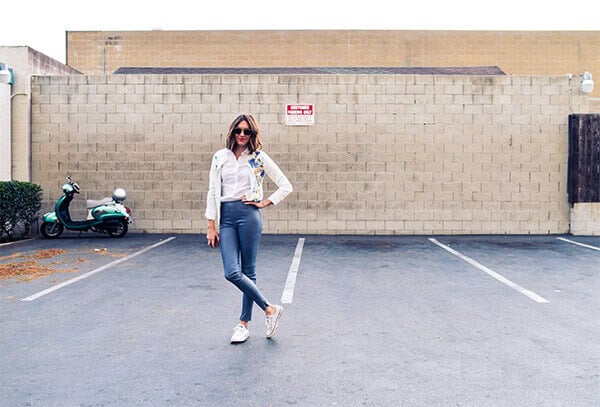
It’s important and it’s a constant work for me. I love this term, Comparative Success Syndrome. It feels like it speaks to me very much so at this time. You’re constantly making choices as a professional and as a human being. It’s important to recognize that where you are in that moment is where you’re supposed to be. The right choices are there for you. I think about this intuitive voice a lot. A friend of mine once said that your rational mind will tell a million different stories about why you shouldn’t or should do something. Your intuitive voice is just a yes or no. “Do I want to do this? Yes or no?” The more we listen to that intuitive voice, the stronger it is, and the easier it is to listen to it.
As it relates to my professional career and coming full circle as it relates to getting dressed, we all know clearly what we feel comfortable with, what we want to wear every day, what we want to be doing every day. That intuitive voice says it quite clearly. It’s a matter of listening to it. My hope with the work I do and the work I put out there is that it will encourage people to listen to that voice and honor what they want inside of them. We could all be much better off if we found a way to detach ourselves and unyoke from this comparative success and drama. We all began to embrace our own unique talents as we all deserve to do.
If somebody wanted to work with you on a consulting coaching basis, do you offer anything like that? I want to make sure that we can send you great clients if that’s something that you’re looking for.
You can find me at LaurenFriedman.com. I am available for hire for illustration commissions and styling advice. I am working myself on doing some bigger coaching and teaching that will be available online.
Thank you, Lauren. Thank you, readers, for taking this little different episode and taking it to heart because fashion is not necessarily superficial. It can be but it can also be a way of reflecting your inner self to the outer world. Thank you and we’ll catch you on the next episode of Get Yourself Optimized.

